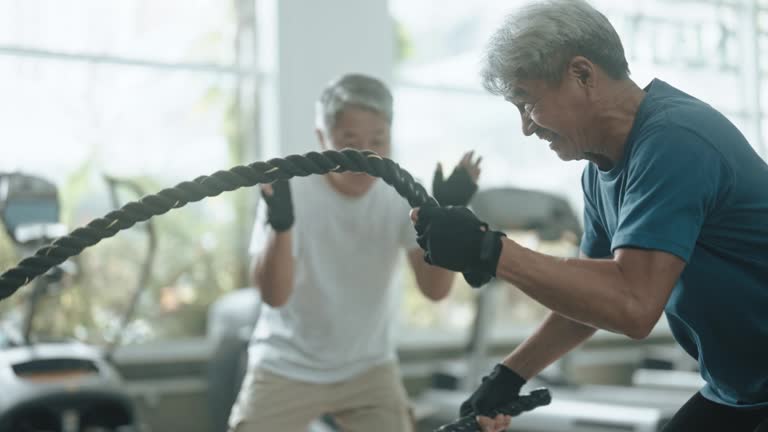
HIIT for Special Populations: Adaptations for Seniors, Pregnant Women, and Those with Injuries
High intensity interval training is celebrated for its efficiency and results. It challenges the body, boosts metabolism, and builds cardiovascular endurance in a relatively short time. However, not everyone can dive into standard routines without modification. A hiit training workout can be adapted safely for seniors, pregnant women, and individuals recovering from injuries. With thoughtful adjustments, these populations can still enjoy the benefits of HIIT while avoiding unnecessary risks.
Why HIIT Needs Modifications for Certain Groups
HIIT typically involves short bursts of near-maximal effort followed by rest. While effective, this intensity can stress joints, the cardiovascular system, and muscles. Seniors may face reduced joint mobility, pregnant women must prioritise foetal safety, and those with injuries require protective strategies. Instead of ruling out HIIT, the focus should be on tailoring intensity, movement choices, and recovery time.
HIIT for Seniors
Ageing affects bone density, muscle mass, flexibility, and recovery ability. Yet, seniors benefit greatly from interval training as it helps maintain functional strength and cardiovascular health.
Key Adaptations
-
Lower impact movements: Replace jump squats with chair squats or step-ups.
-
Longer rest periods: Use a 1:2 or 1:3 work-to-rest ratio instead of 1:1.
-
Balance-focused drills: Include seated marches, supported lunges, or resistance band pulls.
-
Strength emphasis: Light weights or bodyweight resistance to support bone health.
Benefits
-
Improved balance and fall prevention
-
Maintenance of lean muscle mass
-
Reduced risk of chronic diseases such as diabetes and hypertension
-
Enhanced mobility for daily tasks
HIIT for seniors should feel challenging but safe, with instructors monitoring technique closely.
HIIT During Pregnancy
Pregnancy does not necessarily require giving up exercise. In fact, staying active supports circulation, reduces back pain, and helps with postnatal recovery. HIIT, when carefully modified, can be part of a healthy pregnancy routine.
Key Adaptations
-
Avoid high-impact moves: Replace burpees or jump lunges with step-throughs and bodyweight squats.
-
Monitor intensity: Use the “talk test” — the mother should still be able to hold a conversation.
-
Focus on core stability: Safe exercises like side-lying leg lifts or modified planks strengthen core without excessive abdominal pressure.
-
Hydration and cooling: Extra precautions against overheating are essential in Singapore’s climate.
Benefits
-
Helps manage weight gain during pregnancy
-
Improves stamina for labour
-
Reduces swelling and promotes better posture
-
Enhances mood and energy levels
Medical clearance is essential before starting or continuing HIIT while pregnant.
HIIT for Individuals with Injuries
Injuries often lead people to believe they cannot train at all. However, modified HIIT can assist in recovery and prevent deconditioning if carefully managed.
Key Adaptations
-
Avoid stress on affected area: A knee injury may call for upper-body focused circuits.
-
Use unilateral exercises: Training one side while protecting the other maintains strength.
-
Gentle cardio intervals: Rowing, swimming, or stationary cycling reduce joint impact.
-
Physio-approved movements: Partnering with physiotherapists ensures safe programming.
Benefits
-
Maintains cardiovascular fitness during recovery
-
Prevents loss of muscle strength and endurance
-
Supports mental health by staying active
-
Promotes circulation for healing
The focus should always be on safe progression, not maximal effort.
Monitoring Intensity Across Populations
One of the best tools for these groups is the rate of perceived exertion (RPE) scale. Instead of chasing maximum heart rates, participants aim for moderate intensity — around 6 or 7 out of 10. Other safe indicators include:
-
The ability to talk during intervals
-
Steady breathing without dizziness
-
Absence of sharp pain
These markers ensure that training remains effective yet controlled.
The Role of Instructors and Support
Professional oversight is invaluable for special populations. Instructors guide form, provide modifications, and ensure safety. Facilities like True Fitness Singapore offer structured classes where trained professionals adapt sessions to individual needs, creating inclusive fitness environments.
Sample HIIT Modifications for Each Group
For Seniors
-
Interval: 30 seconds sit-to-stand from a chair
-
Rest: 60 seconds slow marching
-
Reps: 6–8 rounds
For Pregnant Women
-
Interval: 20 seconds step-ups onto a low platform
-
Rest: 40 seconds controlled breathing and hydration
-
Reps: 5–6 rounds
For Those with Injuries
-
Interval: 30 seconds battle rope waves (for lower body injury)
-
Rest: 60 seconds seated rest
-
Reps: 8 rounds
These examples show how adaptable HIIT can be while still delivering benefits.
Long-Term Outcomes of Modified HIIT
By embracing modifications, these populations can achieve outcomes such as:
-
Seniors: Independence, improved mobility, and reduced fall risk
-
Pregnant women: Easier delivery and faster recovery
-
Injured individuals: Faster rehabilitation and prevention of deconditioning
Instead of being left behind, special groups can thrive with carefully tailored HIIT routines.
Frequently Asked Questions
Q. Is it safe for seniors with heart conditions to do HIIT?
A. Yes, but only with medical clearance. The intensity must be closely monitored, often staying at moderate levels, and guided by professional supervision.
Q. Can pregnant women do HIIT in the first trimester?
A. In most cases, yes. Early pregnancy allows more freedom, but intensity should still be moderate, and high-impact exercises should be avoided. Always seek doctor approval.
Q. What if I feel pain while doing modified HIIT during injury recovery?
A. Stop immediately. Discomfort is different from pain. Pain signals potential aggravation of injury, and the workout should be adjusted or paused.
Q. How many HIIT sessions per week are safe for these populations?
A. Two sessions per week are usually sufficient. Recovery is just as important as activity, especially for seniors, pregnant women, and those healing from injuries.
Q. Do modifications reduce the effectiveness of HIIT?
A. Not at all. Effectiveness is measured by how well the workout meets individual needs. For these groups, safety and gradual progress are the real measures of success.



